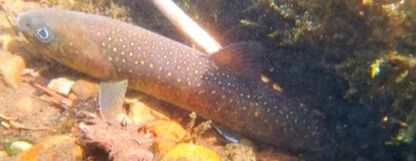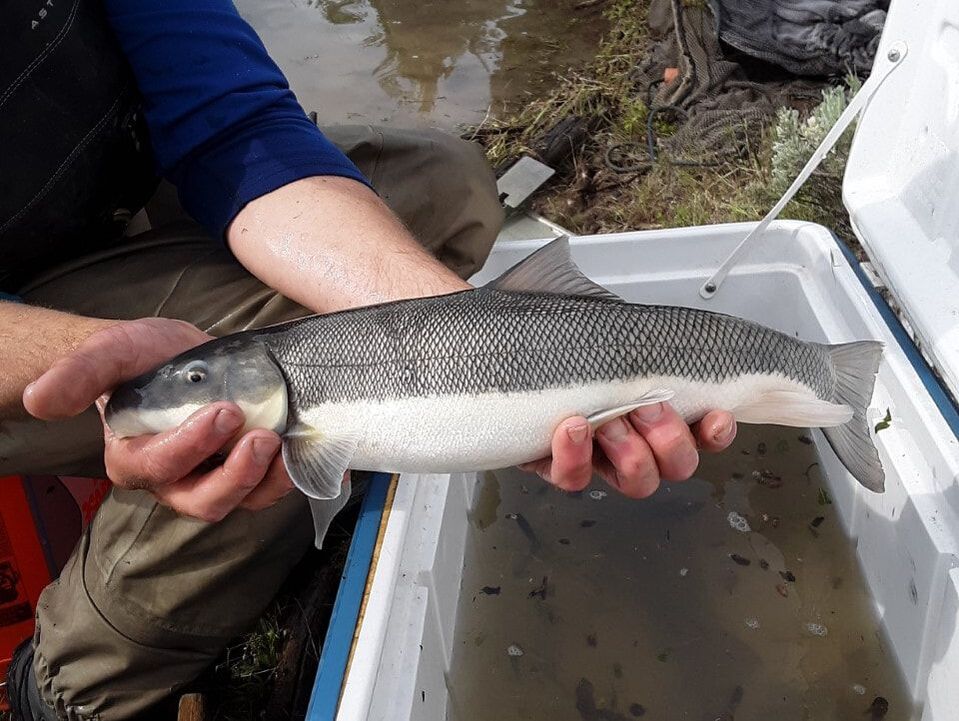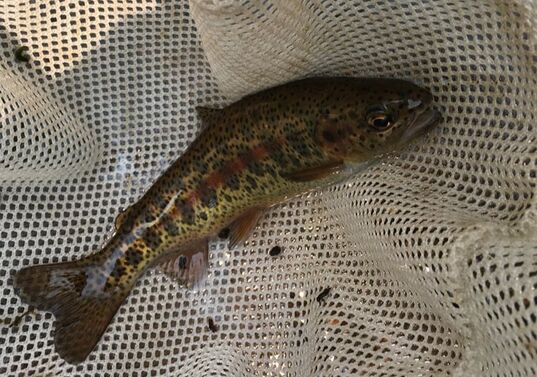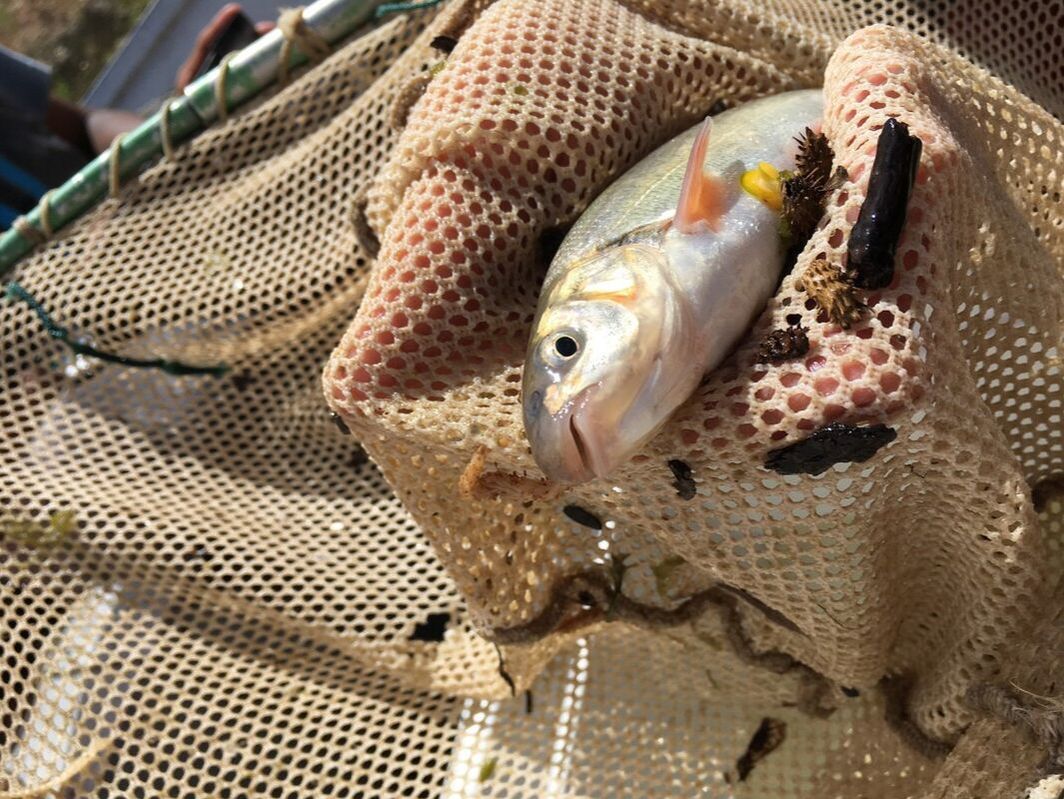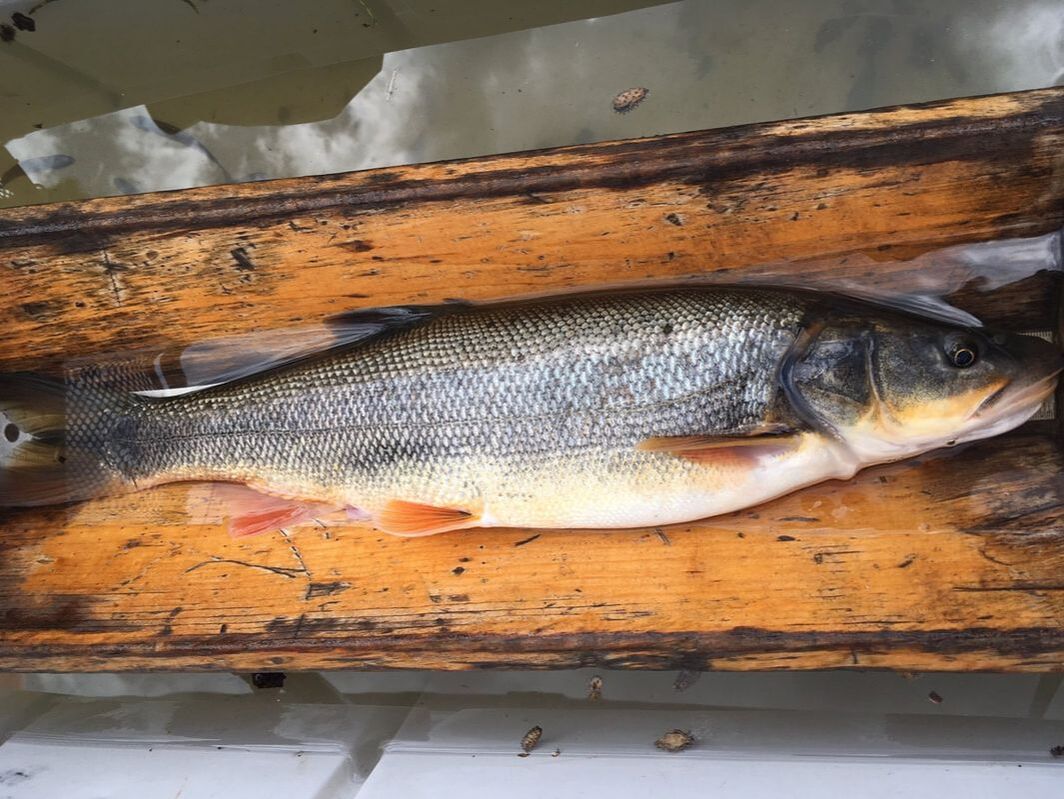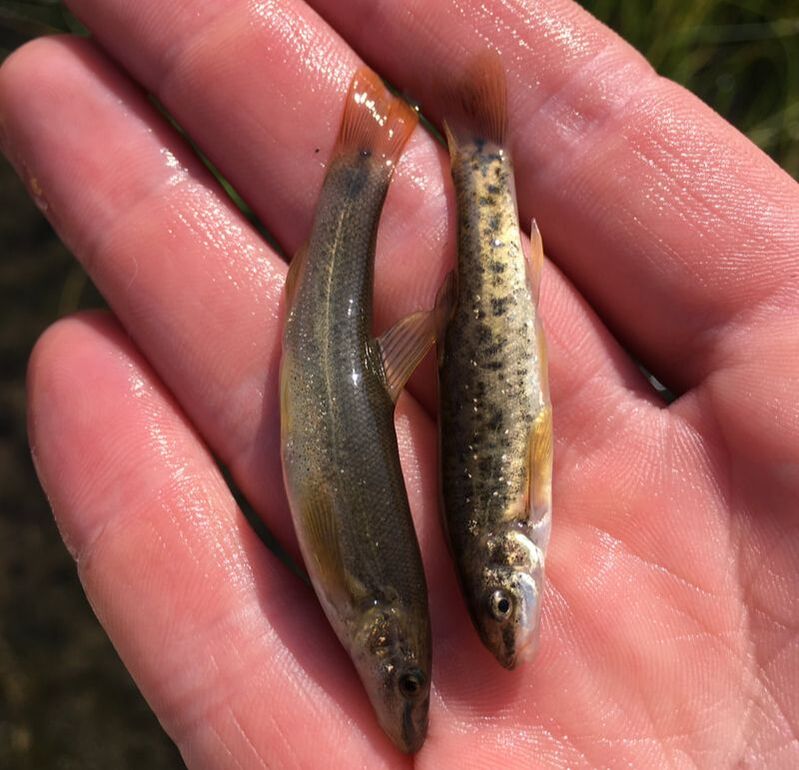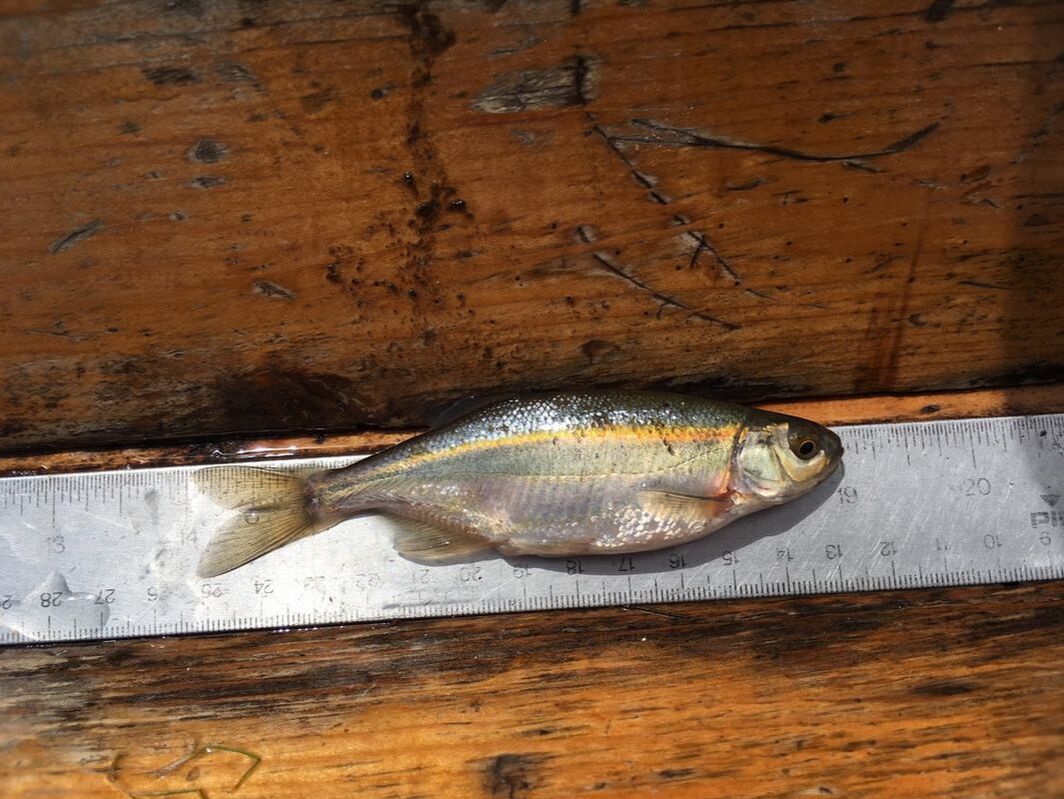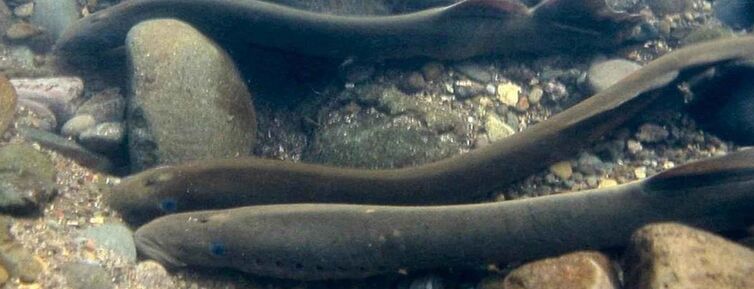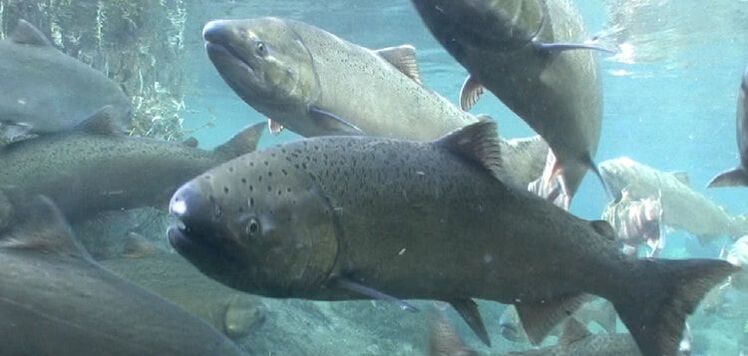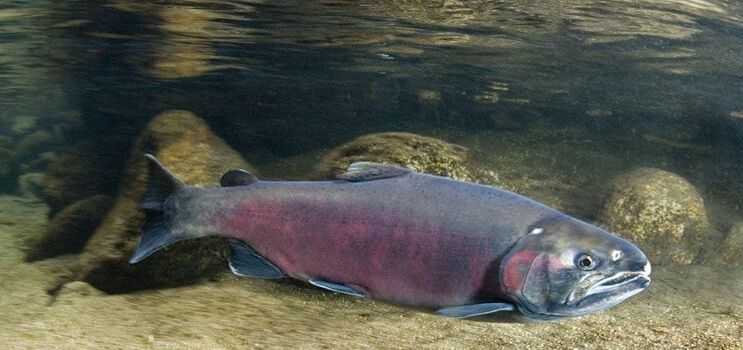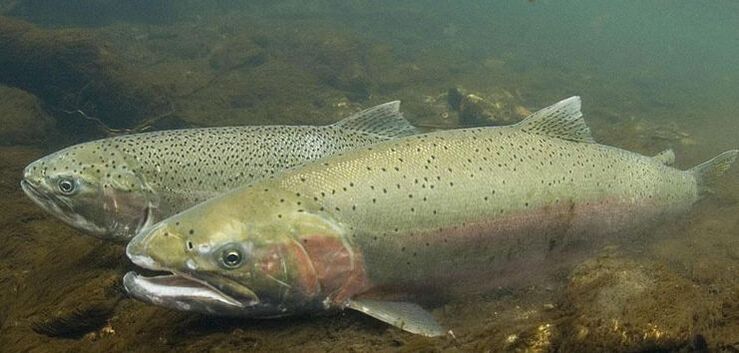Meet the Native Fish of the Malheur
Yes, we really like bull trout (like the one above), but we want to give a shout-out to all the native fish species swimming around in the Malheur Subbasin. Many of the fish below were captured during this year's surveys by regional biologists. They were measured, weighed, and then given a tiny high five before being released safely back into their habitat.
Suckers
With a large set of 'sucker' lips at the bottom of their face, these fish eat algae and invertebrates off the bottom of the stream. The two different species are hard to tell apart...even for fish biologists! The best way is to look at differences in the sucker's lips. If you see a fish scientist up close and personal with a sucker fish...it's probably not for a fishy kiss. Instead, the scientist is using the lip structure to determine a bridgelip from a largscale.
The Latin Names for these Fun, Friendly Fish: Bridgelip: Catostomus columbianus Largescale: Catostomus macrocheilus SculpinSculpin stick to the bottom of the stream (they don’t have a swim bladder). The Malheur Subbasin is home to two species of sculpin. These small native fish are camouflaged to match the surrounding gravel. They hide in swift water and ambush unsuspecting invertebrates for their dinner. Sculpin are indicators of a healthy ecosystem and play an important role in the food chain. Many anglers know this because a sculpin lure will capture the attention of the desired larger game fish!
The Latin Names for these Fresh, Funky Fish: Mottled Sculpin: Cottus bairdi Shorthead Sculpin: Cottus confusus redband troutA Species of Concern
Redband are an important native trout in Eastern Oregon. These trout are uniquely adapted to the warmer and more arid streams of Eastern Oregon. Key identification characteristics include: small black spots from tip of nose to tail and a red band down their side. The Latin name for this Feisty, Funky Fish: Oncorhynchus mykiss spp |
Chiselmouth
|
DaceSpecked and Longnose dace are both found in the Malheur. Dace will eat both algae and small invertebrates- making them freshwater omnivores. These mighty minnows are neighbors with and often eaten by native trout species-. In this picture an Upper Malheur speckled dace lies next to the (longer) longnose dace.
The Latin Name for these Flamboyant Fish: Longnose: Rhinichthys cataractae Speckled: Rhinichthys osculus |
Redside shinerRedside shiners are small minnows often found in slower moving or still waters (lakes and slow streams). Redside shiners show off their bright, colorful 'red sides' when they are ready to spawn. These fish are an important component in the freshwater food web- feeding larger fish species. As one biologist puts it, "Redsides are the bread and butter for bull trout."
The Latin Name for this Funky, Football-shaped Fish: Richardsonius balteatus |
Historical Native Fish of The Malheur Subbasin
The Malheur Subbasin once sustained runs of anadromous fish. 'Anadromous' describes fish with lifecycles in which they were born in freshwater-migrate to the ocean to grow- then come back to their home streams to lay eggs! See the BPT summary page to get updates on work the tribe is doing to celebrate the cultural significance of Chinook Salmon.
